Find the gaps in the market
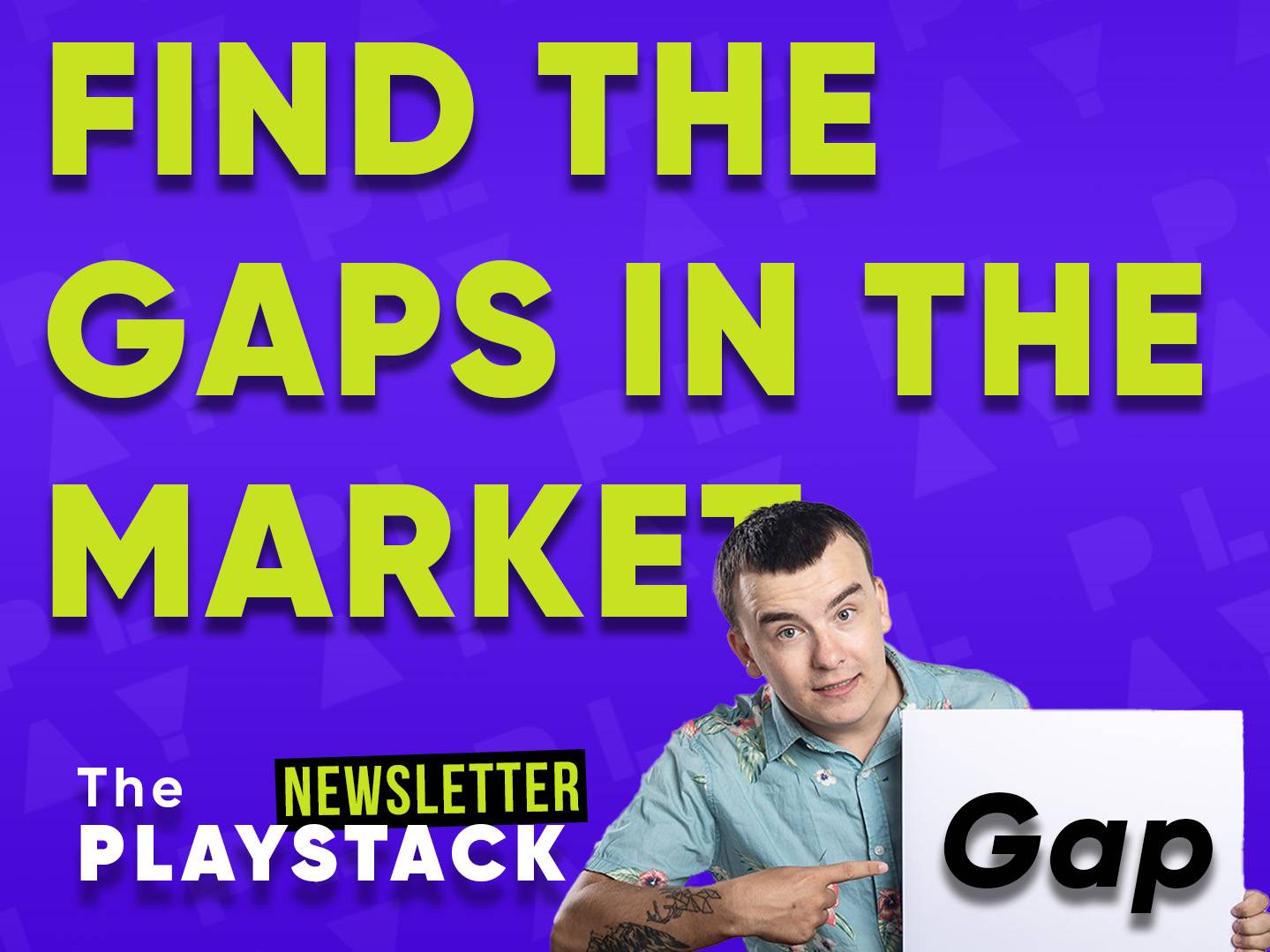
Hey,
Mike and I just returned from Chiang Mai SEO Conference 2024, our 4th SEO conference in as many countries this year.
At an SEO conference where so many are looking to diversify into YouTube, naturally, we organized a meetup to address some of their common YouTube challenges. I'll share how to overcome these challenges in this newsletter.
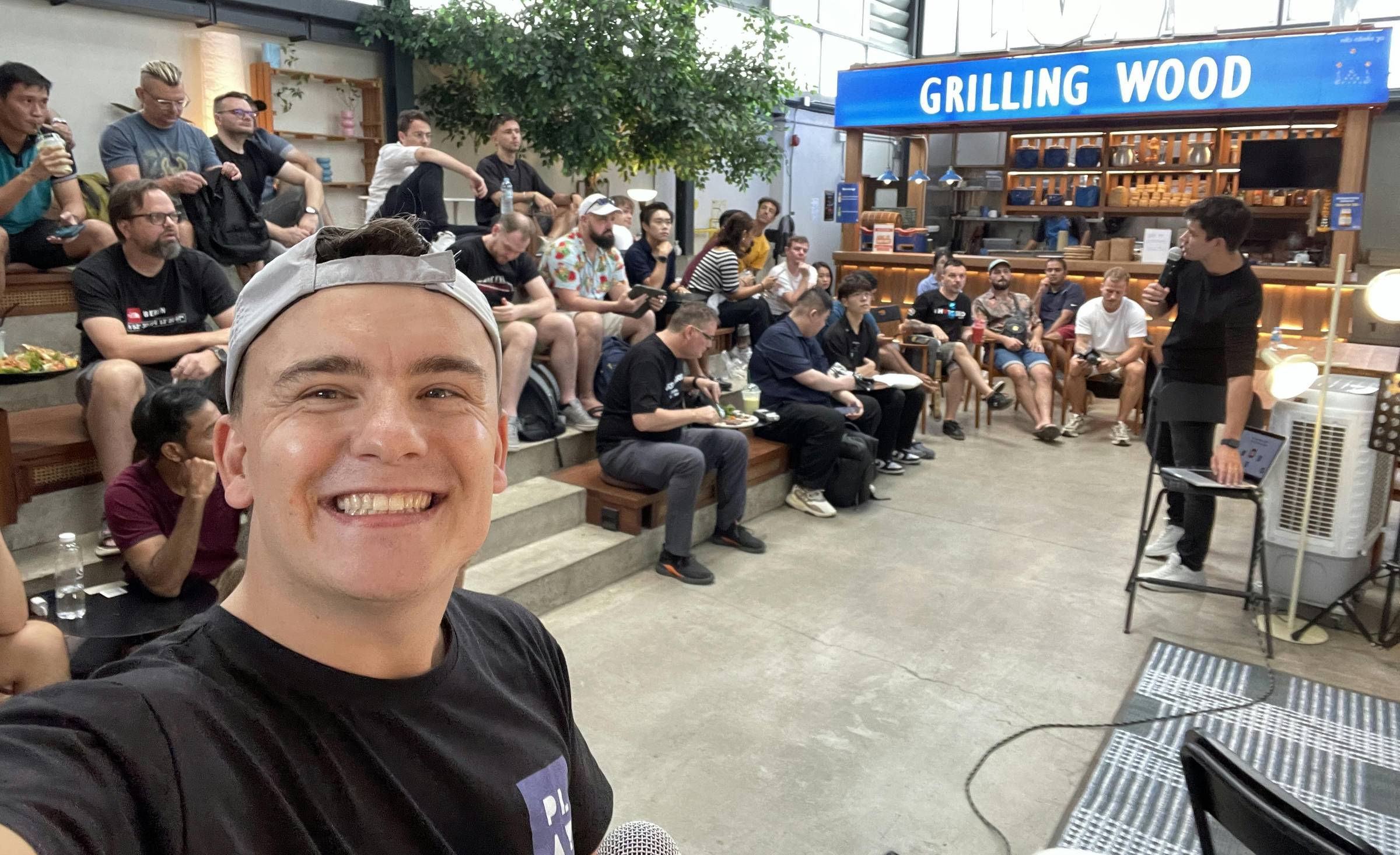
Worth Watching
Part of what I do daily is consume a lot of content and here are some of my favorites:
We created a full YouTube Idea Bank with all the previous outliers.
Get Access Now
- Simon Alexander Ong - I'm 40. If You're In Your 20's or 30's, Watch This
A new video idea format that I've seen around more often. This shows credibility and authenticity the opposite of all the "theory". - High response Marketing - How I'd make $5,000 to $10k Next Month ~ (Even if I was broke)
The "make $10k" format is popular because it's so obtainable for a larger audience. + the broke aspect attracts even more people. - Mark Tilbury - How To Invest For Teenagers
Targeting a specific audience but in reality, it applies to more people.
Fastest way to find gaps in the market on YouTube
First of all, what are these common challenges that SEO's are facing on YouTube?
- SEO pros are struggling with video rankings because they're applying traditional SEO metrics.
- Most business channels have inconsistent output and unclear processes.
- Production feels heavy and ROI seems uncertain.
SEO's are already ahead of the game - you understand search intent, keyword research, content optimization, and you know content takes time.
But here's the thing: YouTube success requires a slightly different playbook.
And this is a reminder for every non-SEO, YouTube takes a lot of effort but that doesn't mean we can't simplify it for you.
Find the gaps in the market
Before we get into the main factors that will answer all your questions, I want to remind you this:
YouTube Algorithm = Your Audience
In short: when your videos aren't performing it's because there is something else better for your audience to watch than that video.
So your goal should be to make a video that resonates better with your audience. What is it that they are watching and what can you do to make them watch your video?
YouTube research tools
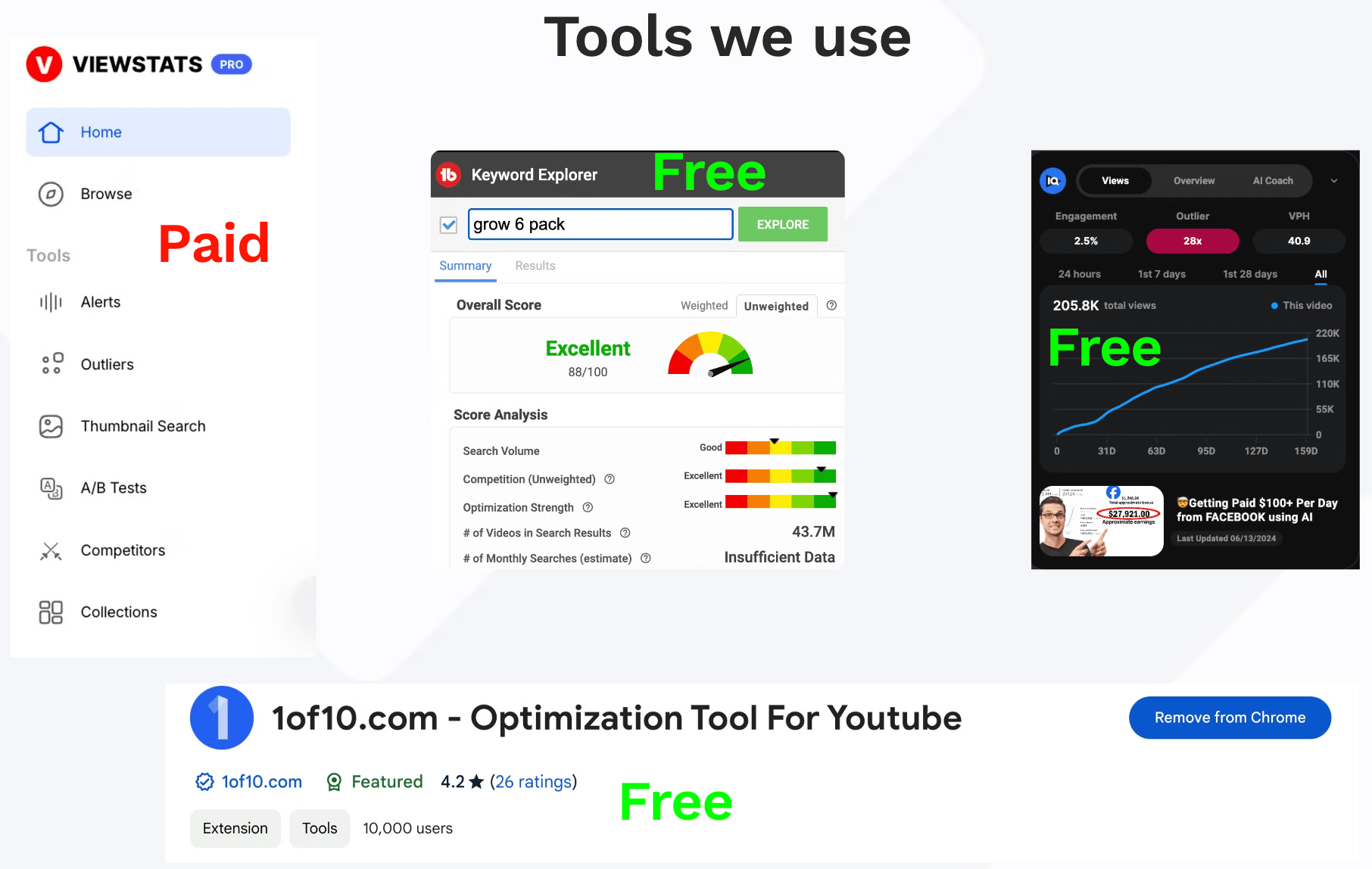
The tools we use at Playstack to find the gaps in the market, research video ideas and analyze the competition:
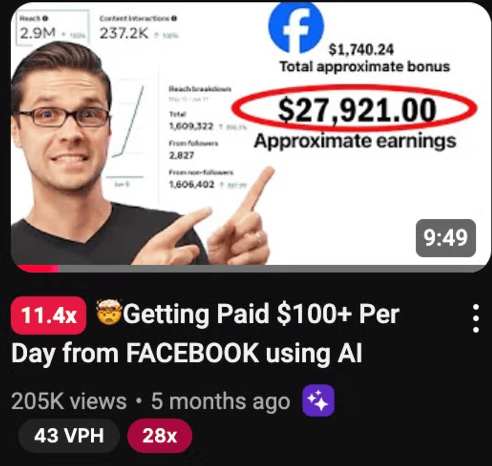
- Viewstats Pro: this is the only paid tool but helps with many things like finding outliers, and checking if someone A/B tested thumbnails and titles.
- TubeBuddy: Great for Keyword Explorer
- VidIQ: Similar to Viewstats pro but less accurate for certain data. Helpful to see subscriber count when researching and Views-Per-hour (VPH).
- 1of10: Shows the outlier score of a video (multiplier of the last 5-10 videos). Perfect for finding recent popular videos.
All of these tools have Chrome extensions. Make sure to install them to get full use of them.
Finding the actual gaps means a lot of research. The tools above definitely help with speeding up that process.
Outliers
1of10 is my favorite to look for outliers on other people's channels.
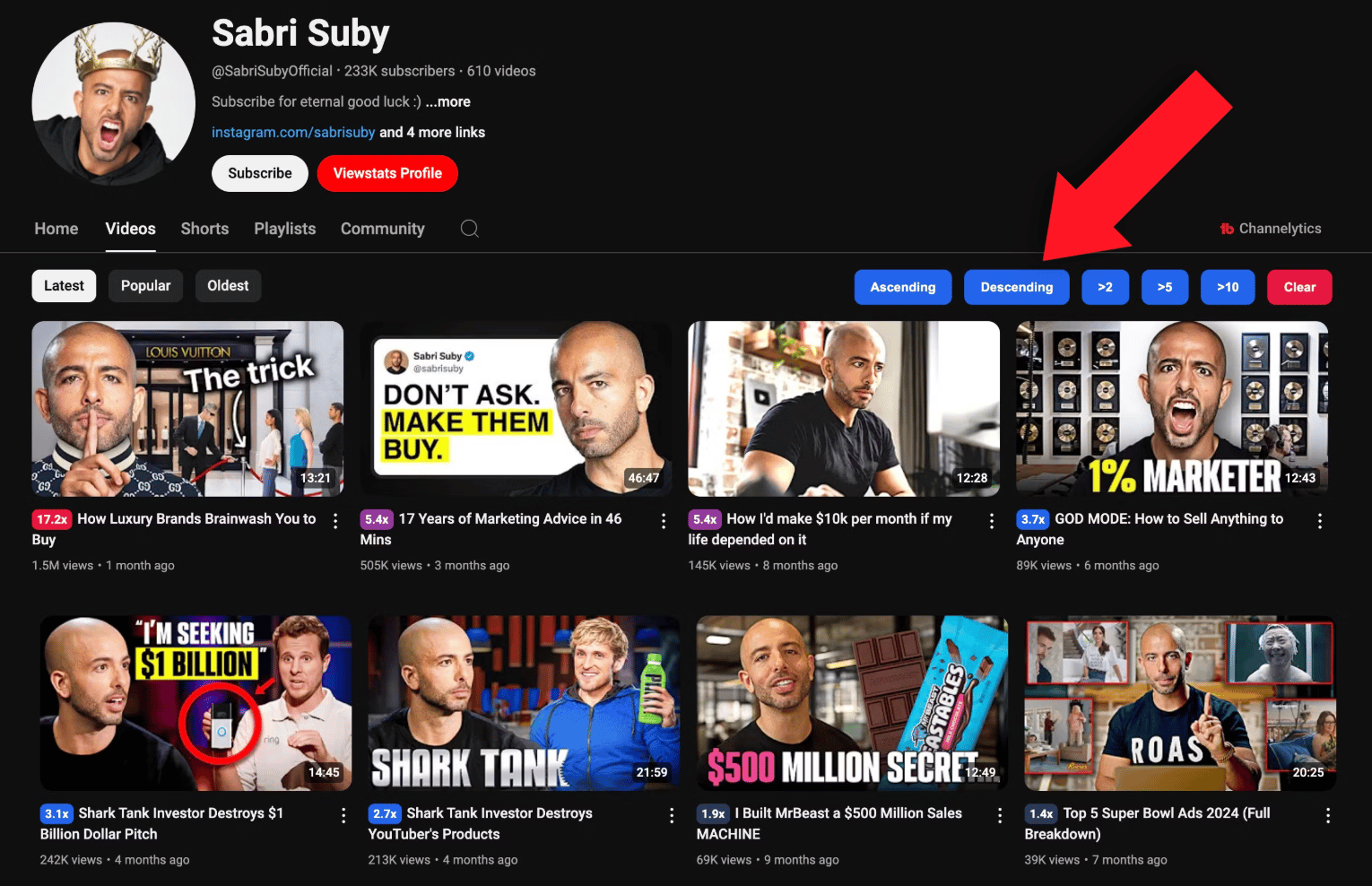
Go to videos > Descending = most recent popular videos first
This way you filter out evergreen videos that have been on their channel for years that might not be relevant anymore.
So the next step is to compare that same topic across different channels to understand if it was luck, the topic, or the execution.
The outlier score helps here for each.



Keyword research is another way to see what works. Check for volume, competition and optimization strength.
Competition: Score for how good this keyword is to target, based on search volume and competition.
Optimization strength: Indicates how well-optimized the top-ranking videos are for this search phrase. Low optimization means you have a chance to rank higher by including the keyword in your Title, Description, and Tags.
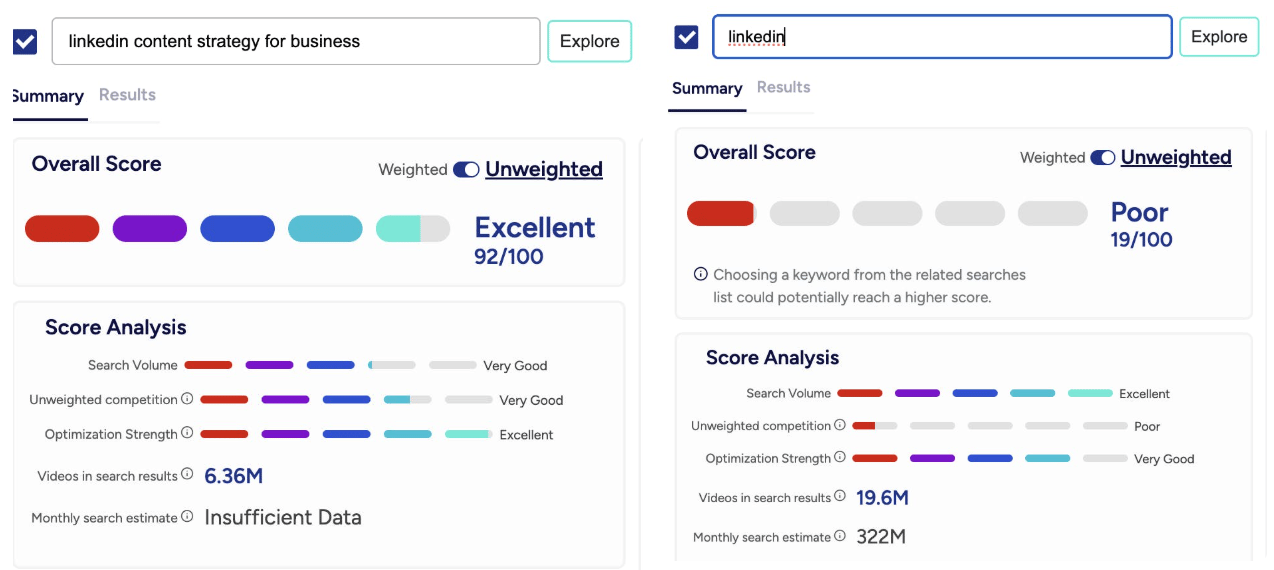
Find channels that have recently grown very big, very quickly
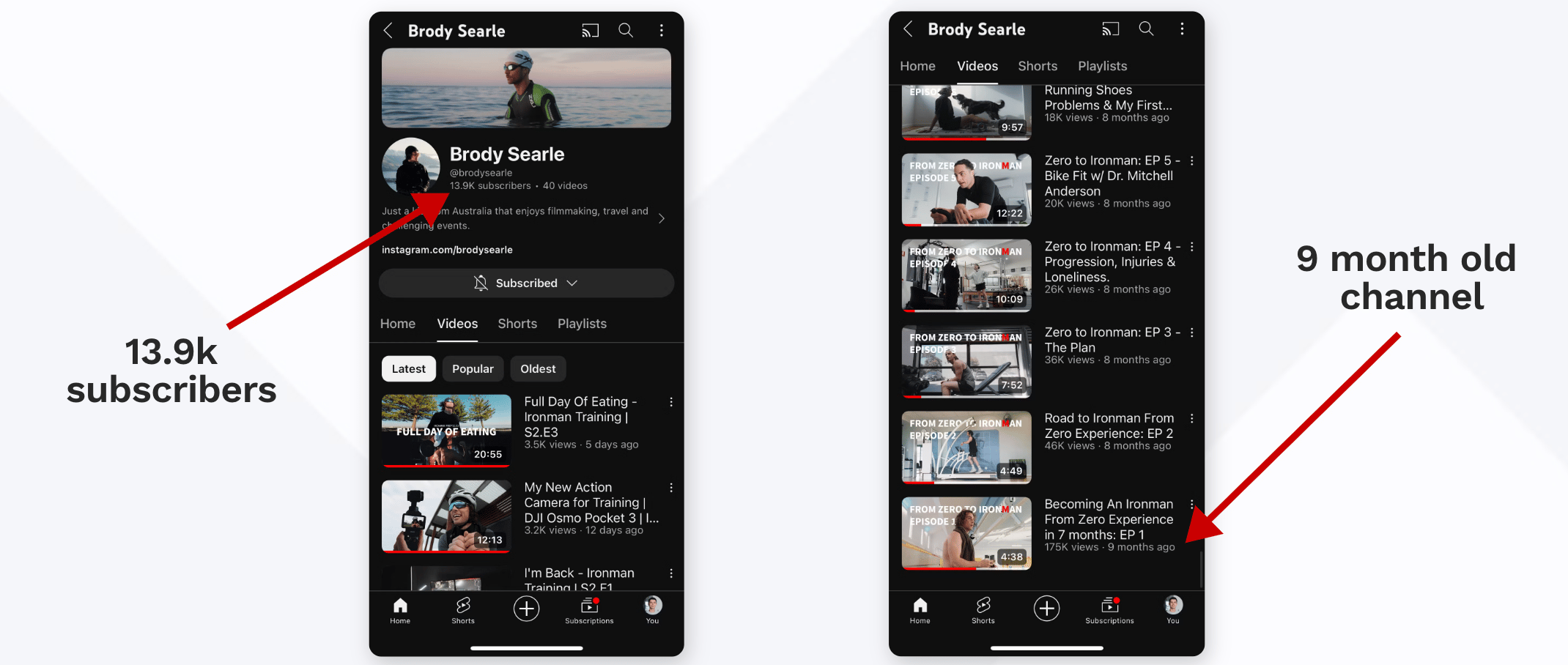
A 9-month-old channel with 14k subscribers, getting 175k views on a video.
This means it's a topic that is trending.
Claude AI
Do we use AI in our YouTube process?
Absolutely, and here is how.
We never ask for a final product with one prompt, it's always a build-up or based on frameworks we created.
What that means is that we won't ask ChatGPT or Claude to create a script based on an idea. We have a SOP with processes to build up to a full script. We add data and analysis to our prompts to get more accurate search results.
To get the best results possible you want to provide your AI as much context as possible.
- What worked before
- Target audience
- Channel/video goals
- Voice
- Audience pain points
To find video ideas with AI, you first provide all the necessary context from the best-performing videos you've found on other channels.
Then, use prompts to generate more video ideas that target your audience, address their pain points, and incorporate your experience and personal context.
In Claude AI, you can create projects and add context to them; in ChatGPT, you can create a GPT with all your context added.
Note: Always validate any AI results through YouTube research using the methods described above.
These are some strategies we use to find video ideas and identify gaps in the market for our clients.
Ideally, you'll identify content pillars and video styles or formats that work well, then double down on the successful ones.
Although these may look like shortcuts, it ultimately comes down to research - I often find myself scrolling through our homepage looking for outliers and analyzing what makes them special.
Want to work with me to grow your business?
If you’re a 7-8-figure founder or agency that wants to grow your YouTube channel, membership, and course — I’d love to work with you.
For 6-figure+ founders and channels, join an exclusive group with 5,500,000+ total subscribers.
Get access to founders, agencies, course creators, community builder and more...



.jpeg)
.jpeg)
.jpeg)